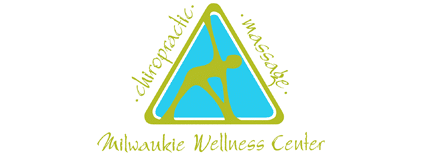What is Osteoporosis and How Can You Prevent Its Development? | Autumn 2008 Newsletter

The International Osteoporosis Society states that 1 in 3 woman and 1 in 8 men over the age of 50 will develop osteoporosis. A quarter of all women who have a hip fracture because of osteoporosis die within one year.
At what age should you start paying attention to preventing the onstet of osteoporosis? Most of us might say in our 40’s or 50’s but it’s our dietary and lifestyle habits during the teen-age years that determine our risk later in life. The nutritional, supplemental and lifestyle habits of adolescents between the ages of 13-20 are crucial to preventing the onset of this serious and life threatening disease. During the teenage years the intestinal tract has an increased ability to absorb calcium more efficiently. Those years are the bone building years. With adequate exercise and calcium in the diet a teenage girl will build optimal bone density by age 20-24. For women this is very important because in later years estrogen and other hormones will decline causing calcium will be taken from the bones into the bloodstream. It is a race against time as most woman will not have enough calcium stored in their bones to prevent osteoporosis.
In an ideal world all of our kids would recognize the benefits of prevention and listen to our wise and sagely advice. But as the father of two boy and step-dad to two girls I can say with ample experience that is not the case. The good news is that the simple guidelines provided by the Osteoporosis Society have been proven to be very effective. All of our parents and teenagers can put these suggestions to good use to stay well.
Osteoporosis is a generalized loss of bone density throughout the body. The bones of the spine, pelvis and long bones of the arms and legs are most affected. It is more common in woman until the age of 80 when both men and woman are affected equally. Risk factors include a family history of osteoporosis, an early onset of menopause, too much or too little exercise (ie. power couching vs. marathon runners), smoking, excessive alcohol use, low vitamin D or calcium intake. Certain medications such as glucosteroids can also cause a loss of bone density. Check with your pharmacist or MD to determine if your medication increases your risk for osteoporosis.
Signs & Symptoms of osteoporosis are often not obvious until a bone fracture occurs. Normal X-rays will only show significant changes when there is a 50% loss of bone density. Specialized X-ray studies that can show the quantity of bone left but are not routinely performed. There are some relatively inexpensive and effective tests such as ultrasound that can indicate a loss of bone density and point to more specific tests.
What to do?
Does anyone think it is easy to convince teenagers to subscribe to a healthy diet and regular exercise program?? When you’re invincible and think that you will live forever, dietary and lifestyle suggestions to prevent a disease the doesn’t manifest until age 50-60 are a hard sell. Fortunately research has shown us there is a very simple but highly effective program. In numerous studies researchers were able to show that a minimum of intake of 1200 mg of calcium per day was enough to create optimum bone density for a teenager. The average young adult only gets 500 mg per day from their normal diet. To maximize bone density during those crucial years all that was needed was an additional intake of 700 mg of calcium per day. Most high potency multi-mineral, vitamin supplements contain a minimum of 500-600 mg of calcium and 40 IU of Vitamin D (which enhances absorption of calcium). All that was needed was one or two daily multi-mineral vitamin/mineral supplements to provide enough dietary calcium and build strong bone density.
Though not included in the International Osteoporosis Society studies, other research has shown that minimizing the amount of protein (meat) in the diet will help to stabilize the chemistry of the blood. This minimizes the leaching of calcium into the bloodstream to neutralize the ph of the body. Another simple and effective way to enhance bone density during those critical years is to cut back on consumption of meat. In later newsletters we’ll discuss strategies for adults and different types of calcium but for now any calcium is better then none.
OFFICE HOURS
Monday
9:00am - 12:00pm
2:30pm - 6:00pm
Tuesday
Closed
Wednesday
9:00am - 12:00pm
2:30pm - 6:00pm
Thursday
Closed
Friday
9:00am - 12:00pm
2:30pm - 6:00pm
Saturday & Sunday
Closed
Milwaukie Wellness Center
5111 SE Lake Road Suite 1
Milwaukie, OR 97222
(503) 659-5900


